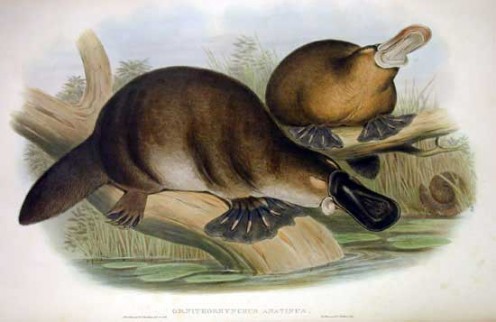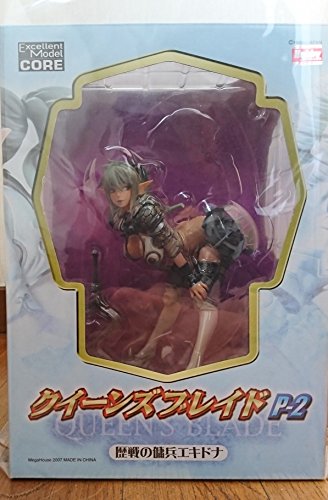Veronica's Random Dose - Egg-Laying Mammals.

According to the book, The World Of Animals, by authors Martin Walters and Jinny Johnson, the oddest of all mammals known to mankind are classified as monotremes.
What classifies these particular mammals as oddities? Simply put, monotremes are mammals that lay eggs!
* Monotremes or Egg-Laying Mammals.
Residing in Australia or nearby New Guinea, there are only five kinds of monotremes in the world.
The commonly known platypus, and four species of echidnas (or spiny anteaters), the short-beaked and long-beaked echidnas (western long-beaked, sir david's long-beaked -which is the most recently discovered -and the eastern long-beaked).
Contrary to their fellow female mammals, the female monotreme does not give birth to her young, instead she lays eggs like a reptile or bird.
* The Platypus.
Residing in eastern Australia (including Tasmania); the platypus is easily one of the strangest mammals known to mankind - and rightly so.
So out-of-the-ordinary is this fascinating creature, that when a preserved specimen was first studied by a team of scientists in 1798, they assumed that it was a fake made up of several animals pieced and sewn together!
Possessing a wide beak like a duck, a flattened tail like a beaver, and webbed feet like an otter, the platypus is ideally suited for swimming, and spends up to half of its time searching for food in the water.
Using its tail as a rudder, the platypus also stores a reserve of fat in its tail for the winter months when food is scarce.
* Hunting And Feeding.
Interestingly enough, the platypus possess a unique way of feeding.
Hunting at night along the stream or lake bed they reside in; the platypus uses its wide leathery bill to detect prey hidden in the mud by the tiny electrical impulses emanating from their muscles.
With a diet that consists mainly of small shrimp, small frogs and fish, insect grubs, worms, and water plants, the platypus is somewhat at a disadvantage since it possesses no teeth.
This small disadvantage is not a problem for the platypus however. It simply grinds up its food by using horny ridges in its jaws.
* Other Interesting Platypus Facts.
1.) Before laying her eggs, the female platypus digs a breeding burrow that is abut 60 feet (18 m) or more into the riverbank. She then proceeds to makes a nest of dry leaves and grass at the end of said burrow.
2.) The male platypus has a unique way of warding of his attackers. Hidden in the fur on each hind leg; resides a poison spur that he kicks out and produces immense pain in his predators.
3.) When platypuses dive for food, they can last underwater for up to one minute.
4.) Once considered a rare breed, platypuses are protected by law and have now become more common in some areas.
* The Short-Beaked and Long-Beaked Echidnas.
These unique specimens resemble porcupines since their bodies are covered with long, sharp, protective spines.
Using their powerful front claws as digging toils, the echidnas dig in the soil for ants or dig in termite nests in search for tasty termites. Once they dig out their meaty finds, they lick up their prey by using their long, sticky tongue.
Although closely related (the long-beaked echidnas and the short-beaked echidnas are cousins), the long-beaked echidnas is usually found only in the highlands of New Guinea, while the short-beaked echidnas is common in Australia and New Guinea.
In addition, the long-beaked echidnas is larger than the short-beaked echidnas, and has longer fur than spines, and a longer, down-curved snout.
* Other Interesting Echidna Facts.
1.) The short-beaked echidnas grows to about 14 inches (35 cm) long.
2.) The long-beaked echidna grows to about 28 inches (70 cm) long.
3.) The female echidna keeps her lone, single egg in a temporary brood pouch which develops on her belly. After about ten days, the egg hatches and the female echidna feeds the baby on her milk.
4.) Contrary to its name (the spiny anteater) the long-beaked echidna feeds mostly on earthworms.
5.) The long-beaked echidna catches earth worms using the tough spines on its tongue.
6.) The male echidna has a four headed phallus (or penis).
7.) The mouth of a long-beaked echidna is simply a small slit at the end of its snout.
8.) The tongue of an echidna stretches out 7 inches (18 cm) beyond its snout tip.
9.) Like the platypus, the echidna has no teeth and has to squash its prey between its tongue and the roof of its mouth.
Monotremes, egg-laying mammals, nature's oddities, whatever you call them, these unique creatures have a special place in the fascinating world of nature.
- Veronica's Random Dose - Dusicyon Thous - The Crab-E...
Among the arctic fox, gray fox, swift fox, and kit foxes, there is one fox that has stood out first and foremost in my mind - The crab-eating fox (Dusicyon thous). * The Crab-Eating Fox's Habitat. ... - Veronica's Random Dose - The Crab-Eating Raccoon
Found residing in swamps or by streams across much of South America east of the Andes and north of Patagonia, the Crab-Eating Raccoon (or Mapache - Procyon cancrivorus) is a smaller and slimmer version (since... - Veronica's Random Dose - Controlling And Making That...
Whether it's due to a cold or flu, seasonal allergies or an upper respiratory infection, coughing spells can be highly uncomfortable; even painful at times. However, studies have shown that coughing...






